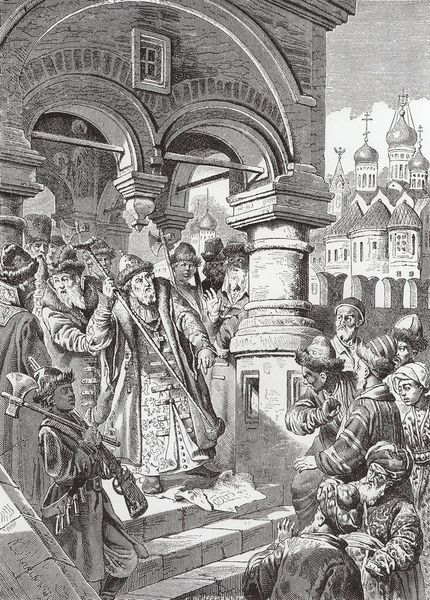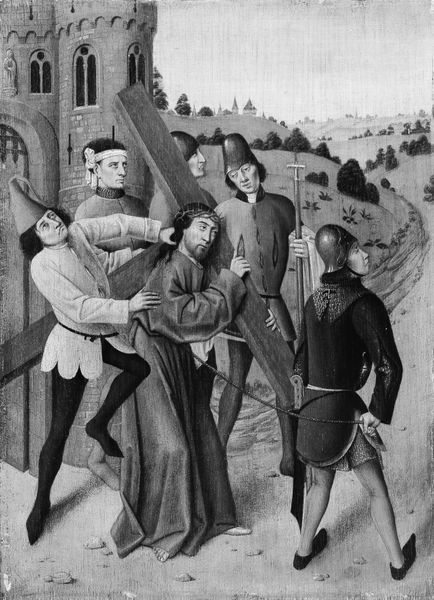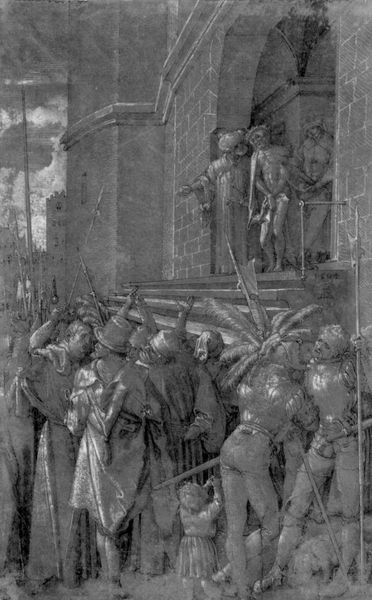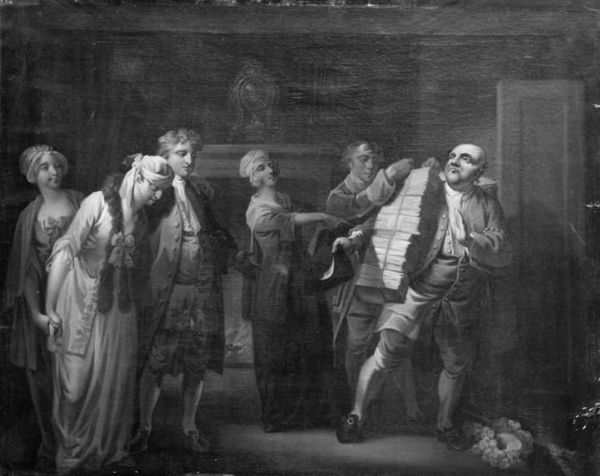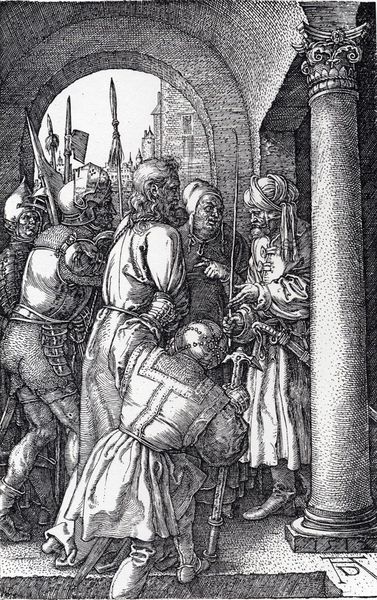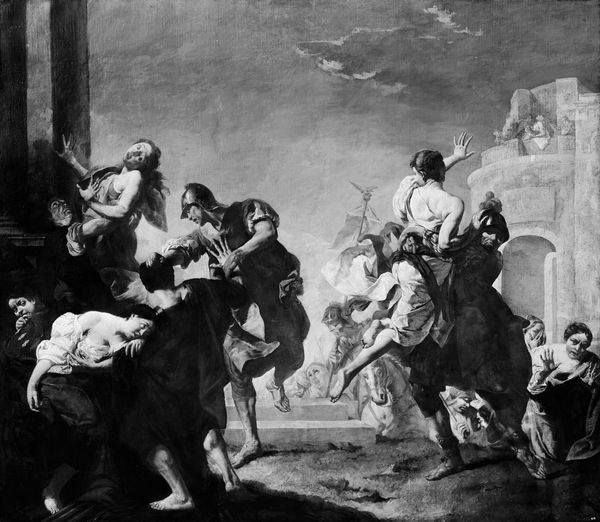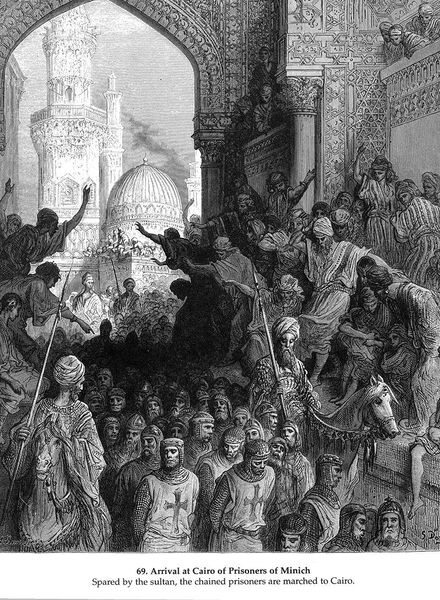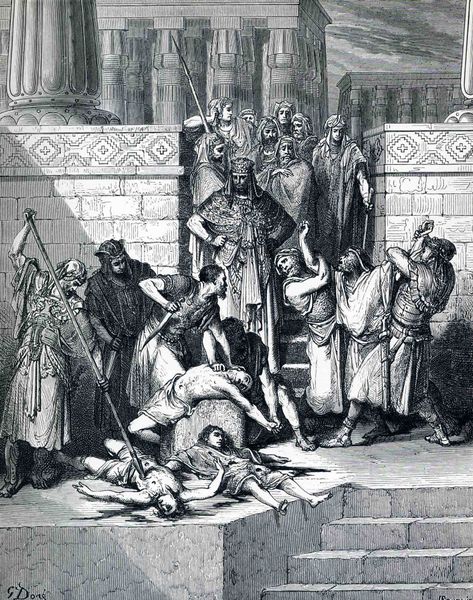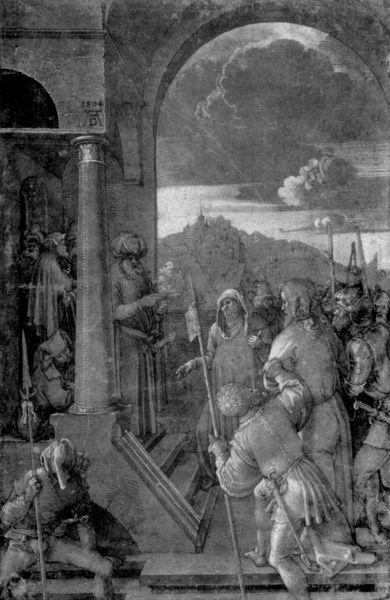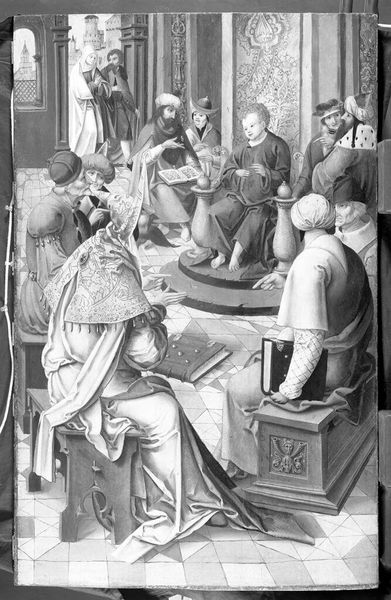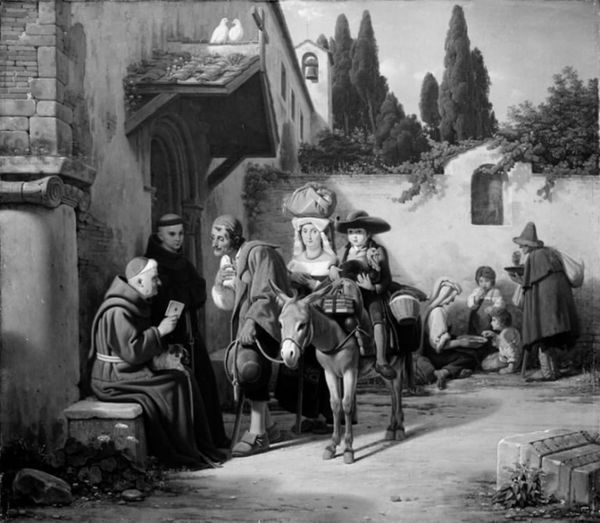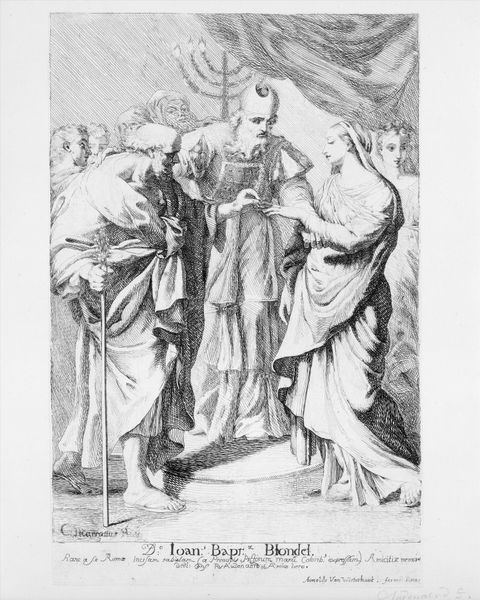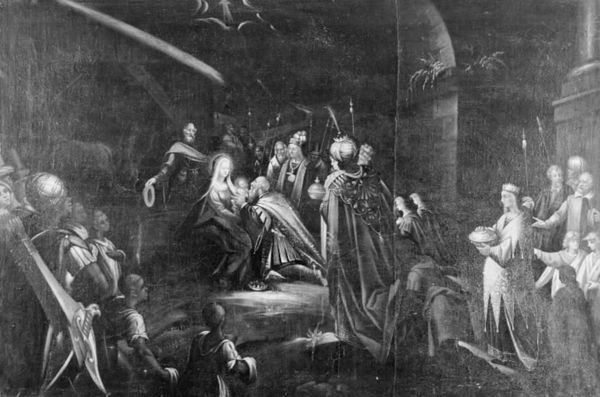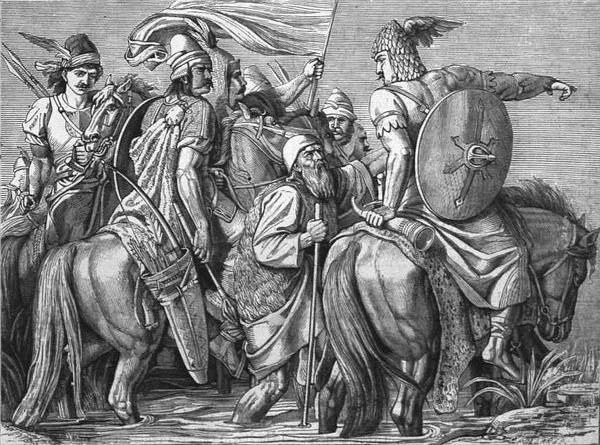
Ecce Homo, (reverse) Christ Blessing; The Disrobing of Christ, (reverse) Saint John the Baptist 1488 - 1527
0:00
0:00
tempera, painting
#
tempera
#
painting
#
figuration
#
black and white
#
history-painting
#
monochrome
#
italian-renaissance
#
monochrome
#
christ
Dimensions: Each 16 1/2 x 8 3/4 in. (41.9 x 22.2 cm)
Copyright: Public Domain
Cornelis Engebrechtsz created this painting of the Ecce Homo and other scenes around 1500, using oil on wood. The composition is stark: a high balcony sharply divides the space, with the suffering Christ presented above, while the crowd occupies the lower register. The monochromatic palette amplifies the somber mood, directing our gaze to the figures’ expressions. Engebrechtsz masterfully uses line and form to convey emotional intensity. The rigid spears and architectural elements contrast with the soft contours of the figures, creating a visual tension that mirrors the scene's psychological strain. Consider the theatrical display of Christ versus the obscured faces in the crowd. This creates a semiotic system where visibility and concealment reflect power dynamics and moral positions. Through the deliberate use of composition and tonal range, the painting encourages us to contemplate questions of justice, spectatorship, and the representation of suffering. It is a powerful reminder that art can engage with profound ethical and philosophical questions.
Comments
No comments
Be the first to comment and join the conversation on the ultimate creative platform.
